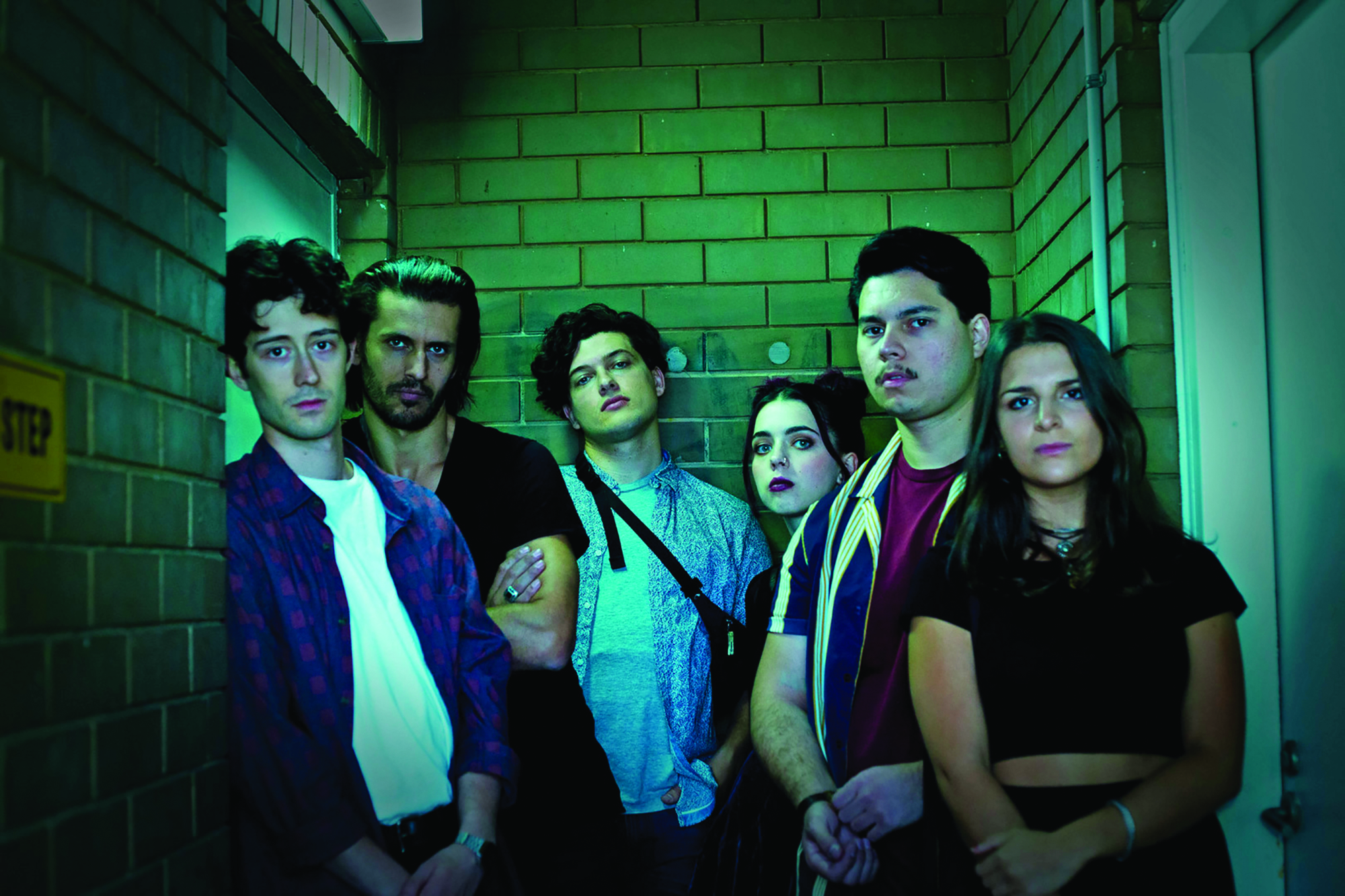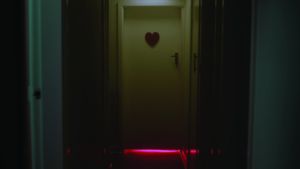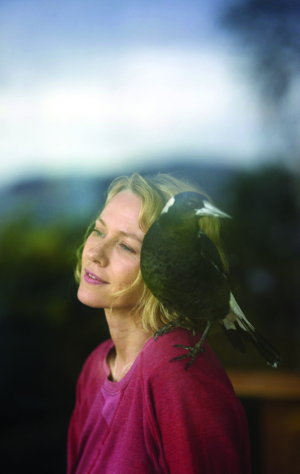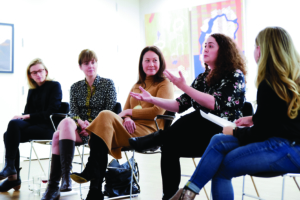The cricket pitch doesn’t usually host all-in brawls, but writer, director and cinematographer Darcy Yuille found himself in the middle of one as an adult.
‘A punch-up started on the field, and I was immediately straight back to my fifteen-year-old response: […] to jump in and be aggressive,’ he confesses.
And my brain did something, where I went straight into that fight-or-flight mode that is really not necessary […] But that was the way I’d been taught by older men in my life.
Experiences of this kind with violence and toxic masculinity inspired Yuille’s Melbourne-set debut feature film, One Punch (2021), which follows Matt (Alex Arco) on the eve of his eighteenth birthday and in the lead-up to a tragic event that will alter his life. What sets this independent film apart is that it was shot entirely on a smartphone; as such, it has won awards at nearly every major smartphone film festival around the world, and also picked up the prize for Best Drama Feature at the 2022 Berlin Independent Film Festival. One Punch is also self-funded, with assistance from producer and script editor Sher-Li Tan and experienced line producer Margaret Tillson.
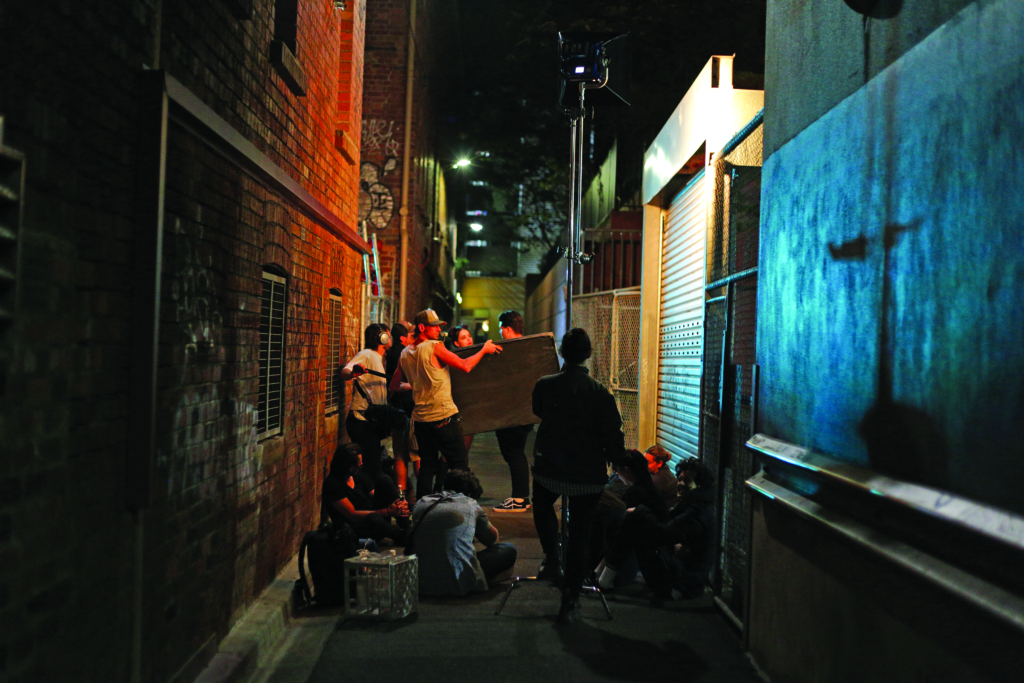
After graduating from the Australian Film Television and Radio School, Yuille made a number of short films and worked as a camera operator on several international productions in Queensland. Throughout that time, he played around with ideas for a feature, but could never settle on one. His outlook changed, however, when he saw a radical new film, Tangerine (Sean Baker, 2015), which had been shot on a smartphone.
‘I remember seeing Tangerine and just going, “Wow – there’s something really beautiful in this, and the format of the camera doesn’t matter at all,”’ the director recalls. ‘What you put in front of it is what really works.’
Inspiration struck, and Yuille decided to use this method of filmmaking to tap into his own experiences with violence.
I’d written a lot of genre pieces in the past, and I’d tried to write things that were not so much [about] me […] but I did have this experience as a kid where I was taught a certain kind of response to people disagreeing with me, and [it was reinforced] when I went to high school and boarding school. People would hit me, and I learnt to hit people if I wanted to get my way […] It was not a very nice experience to have, and I’ve been spending most of my life trying to get away from that.
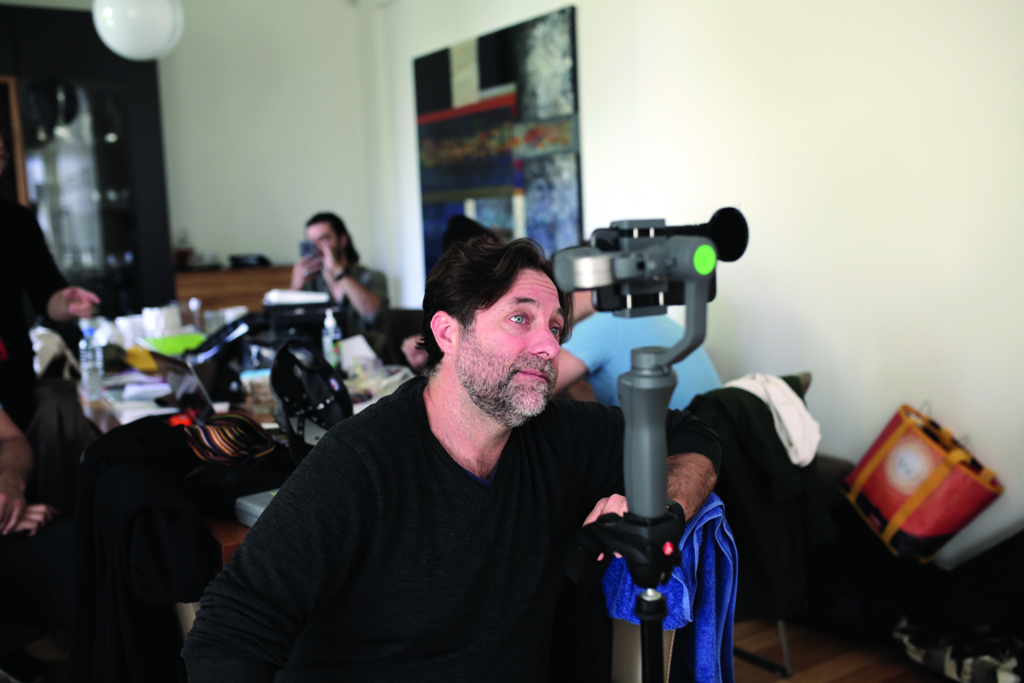
Yuille met Arco at 16th Street Actors Studio in Melbourne, and they agreed to workshop a character that would eventually become Matt, the teenager at the centre of One Punch. ‘[Alex] had the ability to be very young, but he also had this amazing vulnerability through the camera,’ Yuille says.
So I called Alex up and said, ‘I’m going to do this film; I don’t know when, I don’t know how, but let’s start with this process – the Mike Leigh process[1]For an overview of Mike Leigh’s method of working with actors, see Sue MacGregor, ‘Mike Leigh’s Process and Techniques’, Actor Hub, <https://www.actorhub.co.uk/383/mike-leighs-process-and-techniques>, accessed 30 May 2022. – and we’ll create a character and build from there.’
Shortly afterwards, Mirko Grillini joined the cast as Matt’s father, Carlo. As the ensemble grew, Yuille encouraged the actors to improvise together as much as possible: ‘We did a six-hour improvisation where everyone had dinner in character, and Mirko made food and cooked for everyone and dominated the whole situation,’ says Yuille.
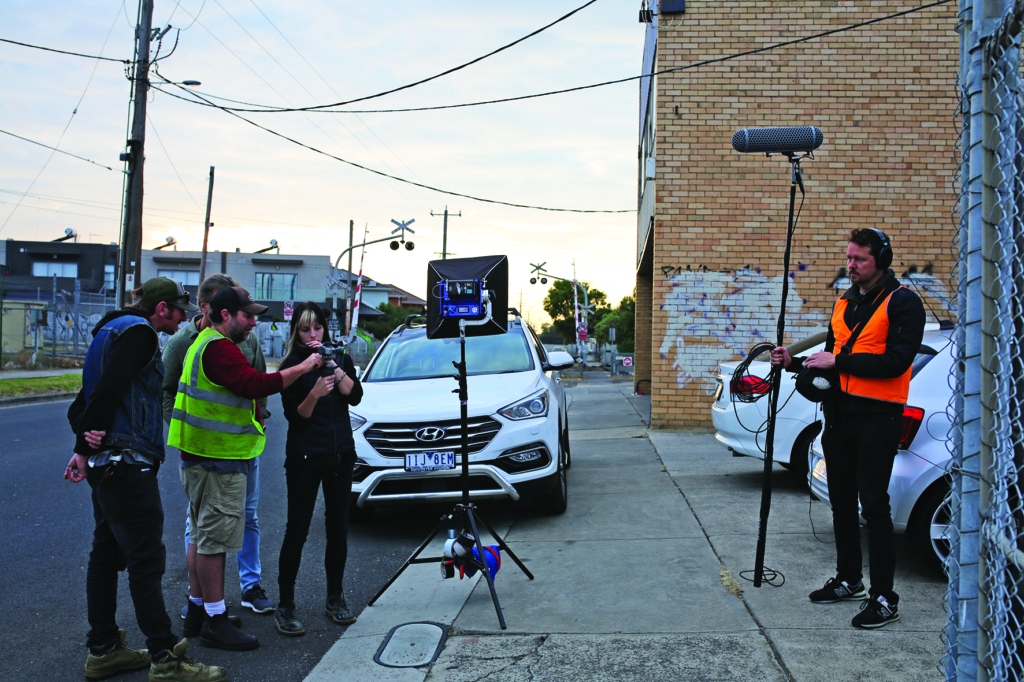
Thanks to this approach, One Punch feels authentic and lived-in – the characters, interconnected family and friends, feel like they’ve spent decades together. Arco’s performance in particular anchors the film, and feels true to challenges faced by many young Australian men; it’s the kind of performance that hints at bigger things for the young actor. The authenticity of the characters and their dynamics is even more impressive considering that the shoot itself only lasted ten days, and ran on the battery life of a smartphone, as Yuille describes:
I used the iPhone 8 Plus, which was a little bit bigger, and gimbals[2]A stabilising device that holds the smartphone steady during filming. were really important. There’s probably only about three tripod shots in the film […] Most of it is either shot on a gimbal or handheld.
The beautiful thing about smartphones is the places you can put them. There’s shots in [the film] I just could not have done without using a smartphone. I could not have even got a Handycam into a lot of these places […] so it gave me the ability to do shots as a filmmaker that you’d want to do, but, unless you’ve got a grip truck and a nice dolly, you probably can’t get a lot of it done.
‘I used the iPhone 8 Plus, which was a little bit bigger, and gimbals were really important. There’s probably only about three tripod shots in the film … Most of it is either shot on a gimbal or handheld.’
– Darcy Yuille
Yuille’s style and direction is so effective that, throughout the film, it’s easy to forget that it was shot on a smartphone (I often did). The choice informs a lot of the action, and the camera moves in a way that syncs perfectly with how the film’s teenage characters move through the world. For Yuille, this was an essential aspect of the film:
I always wanted the camera to be moving in some way, so that’s why it’s always tracking or moving out or panning […] Movement was important to make sure it felt like the audience were moving through the film.
There’s not a lot of traditional coverage as the film progresses, and the beauty of having the phone light and fast was really about being able to move quickly, because we shot it over ten days […] So it really meant we were sometimes shooting for eighteen minutes a day for some things.

From the outset, the director knew that his decision to use a smartphone and a smaller crew would remove a lot of the pressure and time delays that burden bigger productions as each department coordinates with one another. Yuille takes a humble view of what does and doesn’t work in the film,but he prioritises what matters most when telling a story, no matter the budget or technical prowess. ‘I want the performance in the front and the story in the front,’ he says, ‘and with these phones, it was enough to capture the things that were done very well.’
One Punch is also notable for using a smartphone without any of the gimmicks associated with the screenlife[3]Screenlife (otherwise known as desktop cinema) refers to filmmaking that depicts what is happening on a computer or smartphone screen. See Grant Rindner, ‘The History of Screenlife Films: 10 Key Movies in an Exciting New Genre’, GQ, 25 June 2021, <https://www.gq.com/story/history
-of-screenfilms-searching-host-unfriended>, accessed 30 May 2022. genre. The film opts for a landscape as opposed to vertical format, and it makes every shot matter. The characters and story are the primary focus, and the smartphone style gives the audience a degree of intimacy that can’t usually be achieved through traditional cameras. These include sheer close-ups and moments when it feels like you’re standing over the shoulder of a character.
‘Smartphone filmmaking has got this interesting thing where people will almost expect it to reflect some element of the world that we have, because we have such strong relationships with our smartphones,’ says Yuille. ‘But I just used the smartphone as a camera.’
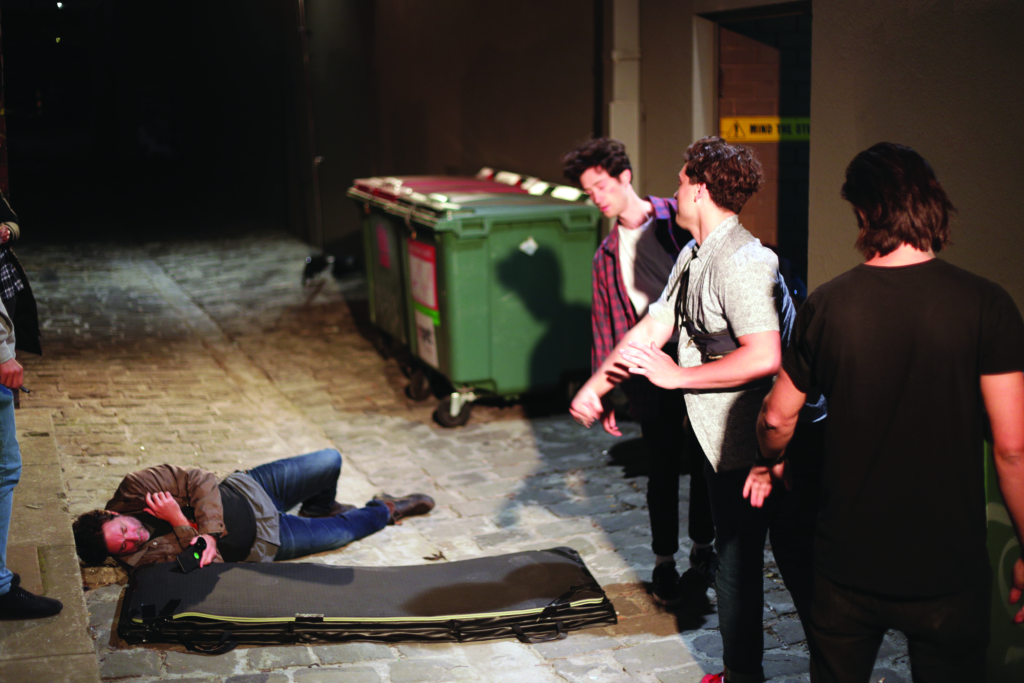
The One Punch experience has given the director the confidence to stick with this approach, and he’s prepping to shoot another film in late 2022. Yuille thinks more Australian creatives should consider the pathway of smartphone filmmaking.
‘Imagine if Screen Australia took [A]$1 million a year and gave fifteen people [A]$60,000 or so each [… and] said, “Go and make a smartphone feature film,”’ he points out.
I think those fifteen people would learn so much more […] than they would spending ten years developing a script and clawing to get their [A]$5 million budget. The beauty of this is [that] it can be immediate.
Not only does One Punch exemplify the resourcefulness of independent Australian cinema and showcase new talent, but also – through its no-nonsense approach, getting the most out of the technology at hand – offers a blueprint for filmmakers on low budgets everywhere.
Endnotes
| 1 | For an overview of Mike Leigh’s method of working with actors, see Sue MacGregor, ‘Mike Leigh’s Process and Techniques’, Actor Hub, <https://www.actorhub.co.uk/383/mike-leighs-process-and-techniques>, accessed 30 May 2022. |
|---|---|
| 2 | A stabilising device that holds the smartphone steady during filming. |
| 3 | Screenlife (otherwise known as desktop cinema) refers to filmmaking that depicts what is happening on a computer or smartphone screen. See Grant Rindner, ‘The History of Screenlife Films: 10 Key Movies in an Exciting New Genre’, GQ, 25 June 2021, <https://www.gq.com/story/history -of-screenfilms-searching-host-unfriended>, accessed 30 May 2022. |
